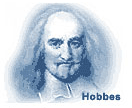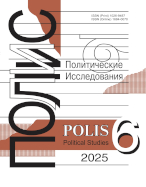Factors of Electoral Choice:
The Classification and Analysis
Tregubov N.A.,
Cand. Sci. (Pol. Sci.), Associate Professor, Department of Social Studies and Political Science, Institute of Socio-Humanitarian Sciences, South Ural State University, Chelyabinsk, tregubovna@susu.ru
elibrary_id: 503092 |
DOI: 10.17976/jpps/2017.03.08
Tregubov N.A. Factors of Electoral Choice: The Classification and Analysis. – Polis. Political Studies. 2017. No. 3. https://doi.org/10.17976/jpps/2017.03.08
The article is devoted to the comprehensive analysis of the vote factors. In the first part the author analyzes the current scientific understanding of the vote conditions. Initially, all the conditions of electoral choice are divided into external (contextual) and internal (direct). The electoral and party system, as well as the distinct characteristics of political regime are highlighted among the external conditions of voting. These conditions determine the set of available alternatives to the electoral choice. Internal factors of voting are divided into long-term and short-term. Group affiliation, partisanship and ideological identification are treated as long-term factors of voting. Voters’ positions on policy issues, evaluations of government performance, perceptions of the candidates’ personal qualities, information activities during the election campaign, emotions and cognitive heuristics are considered as short-term factors of voting. In the second part of the paper the author discusses some problems of studying the vote factors. The author concludes that the scientific understandings of the hierarchy of the vote factors, as well as on the procedure of the impact of these factors on the voters are extremely contradictory. To overcome the situation of uncertainty in the field of electoral research the author offers to pay attention to the problem of the heterogeneity of the vote. In conclusion an exemplary program of empirical research is formulated, focused on the development of scientific ideas about the electoral choice.
References
Abramowitz A.I. The Disappearing Center: Engaged Citizens, Polarization, and American Democracy. New Haven, CT: Yale University Press. 2010. 208 p.
Abramson P.R., Aldrich J.H., Rohde D.W. Studying American Elections. – The Oxford Handbook of American Elections and Political Behavior. Ed. by J.E. Leighley. Oxford: Oxford University Press. 2010. P. 700-715. DOI: https://doi.org/10.1093/oxfordhb/9780199235476.003.0037
Ahn T.K., Huckfeldt R., Mayer A.K., Ryan J.B. Politics, Expertise, and Interdependence within Electorates. – The Oxford Handbook of American Elections and Political Behavior. Ed. by J.E. Leighley. Oxford: Oxford University Press. 2010. P. 278-299. DOI: https://doi.org/10.1093/oxfordhb/9780199235476.003.0016
Ahremenko A.S. Struktury ehlektoral’nogo prostranstva [Structures of Electoral Space]. Moscow: Social’no- politicheskaya mysl’. 2007. 320 p. (In Russ.)
Anderson C.J., Dalton R.J. Nested Voters: Citizen Choices Embedded in Political Contexts. – Citizens, Context, and Choice. How Context Shapes Citizens’ Electoral Choices. Ed. by R.J. Dalton, C.J. Anderson. Oxford: Oxford University Press. 2011. P. 241-256. DOI: https://doi.org/10.1093/acprof:oso/9780199599233.003.0011
Armoudian M., Crigler A.N. Constructing the Vote: Media Effects in a Constructionist Model. – The Oxford Handbook of American Elections and Political Behavior. Ed. by J.E. Leighley. Oxford: Oxford University Press. 2010. P. 300-325. DOI: https://doi.org/10.1093/oxfordhb/9780199235476.003.0017
Bartels L.M. Partisanship and Voting Behavior, 1952-1996. – American Journal of Political Science. Vol. 44. No. 1. P. 35-50. 2000. DOI: https://doi.org/10.2307/2669291
Bartels L.M. The Study of Electoral Behavior. – The Oxford Handbook of American Elections and Political Behavior. Ed. by J.E. Leighley. Oxford: Oxford University Press. 2010. P. 239-261. DOI: https://doi.org/10.1093/oxfordhb/9780199235476.003.0014
Bartle J. Homogeneous Models and Heterogeneous Voters. – Political Studies. Vol. 53. No. 4. 2005. P. 653-675. DOI: https://doi.org/10.1111/j.1467-9248.2005.00550.x
Birnir J. Ethnicity and Electoral Politics. Cambridge: Cambridge University Press. 2007. 296 p. DOI: https://doi.org/10.1017/CBO9780511607530
Blom-Hansen J, Elklit J., Serritzlew S., Villadsen L.R. Ballot Position and Election Results: Evidence from a Natural Experiment. Denmark: Aarhus University. 2014. 31 p. URL: http://dpsa.dk/papers/Blom- Hansen%20et%20al%20(DSS)%2020141610.pdf (accessed 18.03.2017).
Blumenstiel J.E., Plischke T. Changing Motivations, Time of the Voting Decision, and Short-term Volatility – the Dynamics of Voter Heterogeneity. – Electoral Studies. 2015. Vol. 37. No. 1. P. 28-40. DOI: https://doi.org/10.1016/j.electstud.2014.11.003
Campbell A., Converse P.E., Miller W.E., Stokes D.E. The American Voter. New York: John Wiley and Sons. 1960. 573 p.
Dalton R.J., Anderson C.J. Citizens, Context, and Choice. – Citizens, Context, and Choice. How Context Shapes Citizens’ Electoral Choices. Ed. by R.J. Dalton, C.J. Anderson. Oxford: Oxford University Press. 2011. P. 3-32. DOI: https://doi.org/10.1093/acprof:oso/9780199599233.001.0001
Downs A. An Economic Theory of Democracy. N.Y.: Harper Collins Publishers. 1957. 310 p.
Duverger M. Political Parties: Their Organization and Activity in the Modern State. London; Methuen; New York: Wiley. 1954. 439 p.
Enelow J.M., Hinich M.J. The Spatial Theory of Voting. An Introduction. N.Y.; Cambridge: Cambridge University Press. 1984. xv, 238 p.
Erikson R.S., MacKuen M.B., Stimson J.A. The Macro Polity. New York: Cambridge University Press. 2002. 496 p. DOI: https://doi.org/10.1017/CBO9781139086912
Fiorina M.P. Retrospective Voting in American National Elections. New Haven, CT: Yale University Press. 1981. xi, 249 p.
Fiorina M.P., Abrams S.J., Pope J.C. Culture War? The Myth of a Polarized America. 3rd ed. Pearson Longman. 2010. 296 p.
Gaissmaier W., Marewski J.N. Forecasting Elections with Mere Recognition from Small, Lousy Samples: A Comparison of Collective Recognition, Wisdom of Crowds and Representative Polls. – Judgment and Decision Making. 2011. Vol. 6. No. 1. P. 73-88.
Golosov G.V. The Behavior of Voters in Russia: Theoretical Perspectives and the Results of Regional Elections. – Polis. Political Studies. 1997. No. 4. P. 44-56. (In. Russ.)
Hayes D. Trait Voting in U.S. Senate Elections – American Politics Research. 2010. Vol. 38. No. 6. P. 1102-1129. DOI: https://doi.org/10.1177/1532673X10371298
Hillygus D.S. Campaign Effects on Vote Choice. – The Oxford Handbook of American Elections and Political Behavior. Ed. by J.E. Leighley. Oxford: Oxford University Press. 2010. P. 326-345. DOI: https://doi.org/10.1093/oxfordhb/9780199235476.003.0018
Holbrook T.M. Do Campaigns Matter? Thousand Oaks, California: Sage. 1996. 192 p.
Huckfeldt R., Levine J., Morgan W., Sprague J. Accessibility and the Political Utility of Partisan and Ideological Orientations. – American Journal of Political Science. 1999. Vol. 43. No. 4. P. 888-911. DOI: https://doi.org/10.2307/2991839
Jackson J.E. Issues, Party Choices, and Presidential Votes. – American Journal of Political Science. 1975. Vol. 19. No. 2. P. 161-185. DOI: https://doi.org/10.2307/2110431
Jacobson G.C. How Do Campaigns Matters. – Annual Review of Political Science. 2015. Vol. 18. P. 31-47. DOI: https://doi.org/10.1146/annurev-polisci-072012-113556
Jacobson G.C., Carson J.L. The Politics of Congressional Elections. 8th ed. New York, NY: Longman. 2012. 309 p.
Jacoby W.G. The American Voter. – The Oxford Handbook of American Elections and Political Behavior. Ed. by J.E. Leighley. Oxford: Oxford University Press. 2010. P. 262-277. DOI: https://doi.org/10.1093/oxfordhb/9780199235476.003.0015
Jansen G., De Graaf N.D., Need A. Class Voting, Social Changes and Political Changes in the Netherlands 1971-2006. – Electoral Studies. 2011. Vol. 30. No. 3. P. 510-524.
Kam C.D., Zechmeister E.J. Name Recognition and Candidate Support. – American Journal of Political Science. 2013. Vol. 57. No. 4. P. 971-986. DOI: https://doi.org/10.1111/ajps.12034
Key V.O. The Responsible Electorate: Rationality in Presidential Voting 1936-1960. New York: Vintage. 1966. 158 p. DOI: https://doi.org/10.4159/harvard.9780674497764
Klingemann H.-D. Political Parties and Party Systems. – The European Voter: A Comparative Study of Modern Democracies. Ed. by J.J. Thomassen. Oxford: Oxford University Press. 2005. P. 22-63. DOI: https://doi.org/10.1093/0199273219.003.0002
Knutsen O. Value Orientations, Political Conflicts and Left-right Identification: A Comparative Study. – European Journal of Political Research. 1995. Vol. 28 No. 1. P. 63-93. DOI: https://doi.org/10.1111/j.1475-6765.1995.tb00487.x
Lachat R. Electoral Competitiveness and Issue Voting. – Political Behavior. 2011. Vol. 33. No. 4. P. 645-663. DOI: https://doi.org/10.1007/s11109-010-9151-8
Lau R.R., Redlawsk D.P. Advantages and Disadvantages of Cognitive Heuristics in Political Decision Making. – American Journal of Political Science. 2001. Vol. 45. No. 4. P. 951-971. DOI: https://doi.org/10.2307/2669334
Lazarsfeld P.R, Berelson, B. Gaudet H. The People’s Choice: How the Voter Makes Up His Mind in a Presidential Campaign. New York: Columbia University Press. 1944. 239 p.
Lewis-Beck M.S., Jacoby W.G, Norpoth H., Weisberg H.F. The American Voter Revisited. Ann Arbor: University of Michigan Press. 2008. 494 p.
Lewis-Beck M.S., Paldam M. Economic Voting: An Introduction. – Electoral Studies. 2000. Vol. 19. No. 2. P.113-121. DOI: https://doi.org/10.1016/S0261-3794(99)00042-6
Lewis-Beck M.S., Stegmaier M. Economic Determinants of Electoral Outcomes. – Annual Review of Political Science. 2000. Vоl. 3 (1). P. 183-219.
Lipset S.M., Rokkan S. Cleavage Structures, Party Systems and Voter Alignments: An Introduction. – Party Systems and Voter Alignments: Cross-National Perspectives. Ed. by S.M. Lipset, S. Rokkan. N.Y.: Free Press. 1967. P. 1-64.
Loewen P.J., Hinton K., Sheffer L. Beauty Contests and Strategic Voting. – Electoral Studies. 2015. Vol. 38. No. 1. P. 38-45. DOI: https://doi.org/10.1016/j.electstud.2015.01.001
Lupia A. Short Cuts versus Encyclopedias: Information and Voting Behavior in California Insurance Reform Elections. – American Political Science Review. 1994. Vol. 88. No. 1. P. 63-76.
Markus G.B. The Impact of Personal and National Economic Conditions on the Presidential Vote: A Pooled Cross-Sectional Analysis. – American Journal of Political Science. 1994. Vol. 32. No. 1. P. 137-154. DOI: https://doi.org/10.2307/2111314
Markus G.В., Converse P.E. A Dynamic Simultaneous Equation Model of Electoral Choice. – American Political Science Review. 1979. Vol. 73. No. 4. P. 1055-1070. DOI: https://doi.org/10.2307/1953989
Meleshkina E.Y. Studies of Electoral Behavior: Theoretical Models and Problems of Their Application. – Political Science (RU). 2001. No. 2. P. 187-212. (In Russ.)
Meredith M., Salant Y. On the Causes and Consequences of Ballot Order Effects. – Political Behavior. 2013. Vol. 35. No. 1. P. 175-197. DOI: https://doi.org/10.1007/s11109-011-9189-2
Miller A.H. Public Judgments of Senate and House Candidates. – Legislative Studies Quarterly. 1990. Vol. 15. No. 4. P. 525-542.
Miller A.H., Wattenberg M.P., Malanchuk O. Schematic Assessments of Presidential Candidates. – American Political Science Review. 1986. Vol. 80. No. 2. P. 521-540. DOI: https://doi.org/10.2307/1958272
Miller W.E., Shanks J.M. The New American Voter. Cambridge: Harvard University Press. 1996. 640 p.
Neuman W.R., Marcus G.E., Crigler A.N., Mackuen M. Theorizing Affect’s Effects. – The Affect Effect: Dynamics of Emotion in Political Thinking and Behavior. Ed. by W.R. Neuman, G.E. Marcus, A.N. Crigler, M. Mackuen. Chicago: University of Chicago Press. 2007. P. 1-20.
Niemi R.G., Bartels L.M. New Measures of Issue Salience: An Evaluation. – Journal of Politics. 1985. Vol. 47. No. 4. P. 1212–1220. DOI: https://doi.org/10.2307/2130815
Noelle-Neumann E. The Spiral of Silence: Public Opinion – Our Social Skin. 2nd ed. Chicago: The University of Chicago Press. 1993. 277 p.
Norris P. Electoral Engineering. Voting Rules and Political Behavior. Cambridge University Press. 2004. 390 p. DOI: https://doi.org/10.1017/CBO9780511790980
Page B.I. Choices and Echoes in Presidential Elections: Rational Man and Electoral Democracy. Chicago: University of Chicago Press. 1978. 336 p.
Page B.I., Jones C. Reciprocal Effects of Policy Preferences, Party Loyalties, and the Vote. – American Political Science Review. 1979. Vol. 73. No. 4. P. 1071-1089. DOI: https://doi.org/10.2307/1953990
Pappi F.U. Political Behavior: Reasoning Voters and Multi-Party Systems. – A New Handbook of Political Science. Ed. by H.-D. Klingemann, R.E. Goodin. Oxford: Oxford University Press. 1996. P. 255-275. DOI: https://doi.org/10.1093/0198294719.003.0009
Pattie C., Denver D., Johns R., Mitchell J. Raising the Tone? The Impact of “Positive” and “Negative” Campaigning on Voting in the 2007 Scottish Parliament Election. – Electoral Studies. 2011. Vol. 30. No. 2. P. 333-343. DOI: https://doi.org/10.1016/j.electstud.2010.10.003
Petrocik J.R. Issue Ownership in Presidential Elections, with a 1980 Case Study. – American Journal of Political Science. 1996. Vol. 40. No. 3. P. 825-850. DOI: https://doi.org/10.2307/2111797
Popkin S.L. The Reasoning Voter: Communication and Persuasion in Presidential Campaigns. 2nd ed. Chicago: University of Chicago Press. 1994. 336 p.
Pushkareva G.V. The Study of Electoral Behavior: The Contours of the Cognitive Model. – Polis. Political Studies. 2003. No. 3. P. 120-130. DOI: https://doi.org/10.17976/jpps/2003.03.12 (In Russ.)
Rabinowitz G., Macdonald S.E. A Directional Theory of Issue Voting. – American Political Science Review. 1989. Vol. 83. No. 1. P. 93-121. DOI: https://doi.org/10.2307/1956436
Roy J.J. Information Heterogeneity, Complexity and the Vote Calculus. – Journal of Elections, Public Opinion and Parties. 2011. Vol. 21. No. 1. P. 29-56. DOI: https://doi.org/10.1080/17457289.2010.537342
Schedler A. The Menu of Manipulation. – Journal of Democracy. 2002. Vol. 13. No. 2. P. 36-50. DOI: https://doi.org/10.1353/jod.2002.0031
Shevchenko Y.D. Between Expression and Rationality: The Study of Electoral Behavior in Russia. – Polis. Political Studies. 1998. No. 1. P. 130-136. (In Russ.)
Simon H.A. Bandwagon and Underdog Effects and the Possibility of Election Predictions. – Public Opinion Quarterly. 1954. Vol. 18. No. 3. P. 245-253. DOI: https://doi.org/10.1086/266513
Simpser A. Why Governments and Parties Manipulate Elections: Theory, Practice, and Implications. Cambridge: Cambridge University Press. 2013. 282 p. DOI: https://doi.org/10.1017/CBO9781139343824
Stokes D.E. Some Dynamic Elements of Contests for the Presidency. – American Political Science Review. 1966. Vol. 60. No. 1. P.19-28. DOI: https://doi.org/10.2307/1953803
Thomassen J.J.A. Introduction. – The European Voter: A Comparative Study of Modern Democracies. Ed. by J.J.A. Thomassen. Oxford: Oxford University Press. 2005. P. 1-20. DOI: https://doi. org/10.1093/0199273219.003.0001
Wattenberg M.P., Powell S. A Policy-Oriented Electorate: Evaluations of Candidates and Parties in the Obama Elections Compared to the 1952-1980 Period. – Presidential Studies Quarterly. 2015. Vol. 45. No. 3. P. 540-557. DOI: https://doi.org/10.1111/psq.12209
Zaller J. Floating Voters in the U.S. Presidential Election, 1948-2000. – Studies in Public Opinion: Attitudes, Nonattitudes, Measurement Error, and Change. Ed. by W.E. Saris, P.M. Sniderman. Princeton, N.J.: Princeton University Press. 2004. P. 166-212.
See also:
Polyakov L.V.,
Russians electoral behaviour. – Polis. Political Studies. 2011. No6
Tarasenko G.K.,
Dynamics of political electoral preferences among residents of closed cities in Russia (1995-2003). – Polis. Political Studies. 2024. No1
Turchenko M.S.,
Electoral Malpractices around the World. – Polis. Political Studies. 2020. No5
Gaivoronsky Yu.O.,
Split-ticket voting in the federal legislative elections: evidence from the 7th convocation of the State Duma. – Polis. Political Studies. 2023. No3
Sirotkina E.V., Karandashova S.A.,
Loyalty of Elites and Gubernatorial Elections: the Role of Pre-electoral Conflicts in the Voting Outcome. – Polis. Political Studies. 2017. No6




.jpg)






 print
print
.jpg)
.jpg)